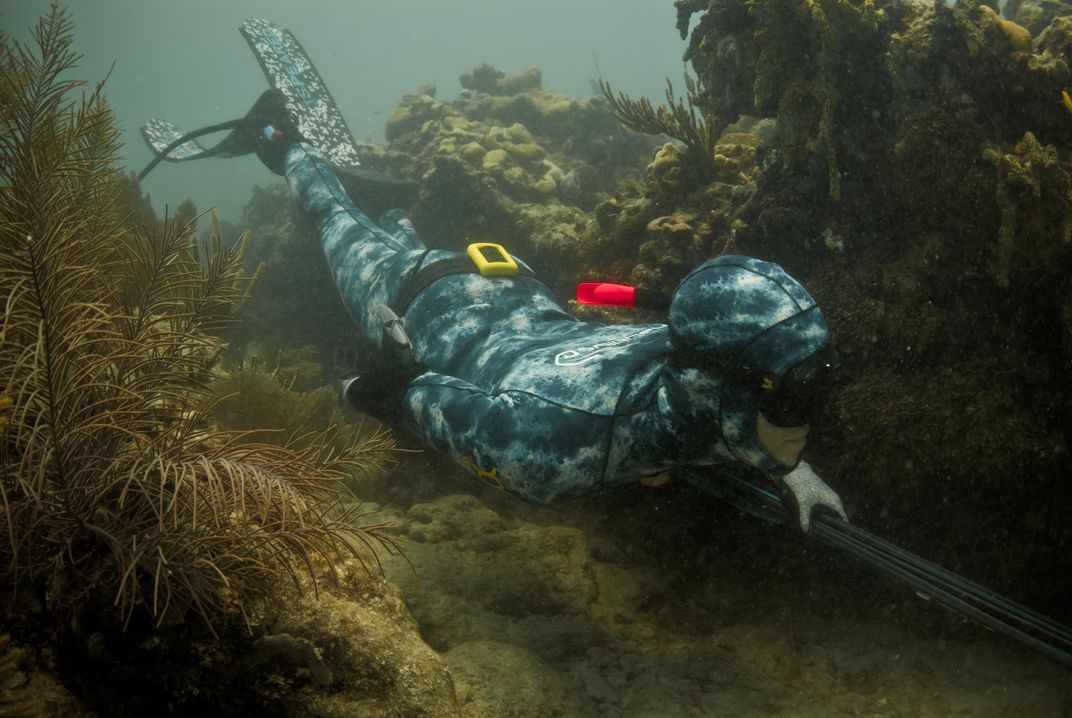An Electric Fence Wards Off Sharks
South Africa has begun testing a humane way to make its beaches safer
/https://tf-cmsv2-smithsonianmag-media.s3.amazonaws.com/filer/06/20/062062b7-55a7-4039-8e5a-0082142f17b1/42-16810983.jpg)
In 2013, there were 72 unprovoked shark attacks on humans, 10 of which were fatal, according to data collected by the Florida Museum of Natural History. While the odds of an attack are very low, there are certain factors that put ocean-goers at risk. Surfers, for instance, are the most likely targets, accounting for about 50.8 percent of all attacks, and location is also a major component. Australia, Hawaii and South Africa have larger shark populations than other parts of the world.
That’s why the KwaZulu-Natal Sharks Board in South Africa has announced a plan to keep predators away from beaches. In an experiment lasting through May, researchers are stretching nearly 330 feet of electric cable on the sea floor and monitoring its effects on local Great Whites.
The fence doesn’t zap sharks in the same way an invisible barrier might keep fido in the yard, but rather takes advantage of a natural sensitivity in sharks’ noses. The system will consist of a cable with a series of vertical offshoots that emit a low-frequency electric field. A pouch of gel (known as the Ampullae of Lorenzini) in a shark’s nose makes it especially sensitive to such a field; it’s the same mechanism that allows it to home in on prey. Once it gets closer to this “fence,” probably within a few meters, it will naturally turn back.
According to Paul Von Blerk, the project leader, the behavior is similar to a human's reaction to extreme heat. “From a distance, we can sense the warmth [fire] emits, but the closer we get the more discomfort we experience. Once the discomfort gets too much we can move away from the flame,” he explained to Northglen News, a local outlet in South Africa.
Whales, dolphins and other sea life don’t have that particular anatomy, so they will remain unaffected. Reportedly, humans who accidentally brush against the cable or its appendages might feel a slight tingle.

The fence is an extension of the surfer-safety device called the Shark POD, which was developed by the KwaZulu-Natal Sharks Board in the mid-1990s and is currently marketed by the Australian company Shark Shield. The system, which can mount to surf boards or be attached to divers' ankles, uses a pair of electrodes to emit a three-dimensional field around the user that extends from three to ten feet wide.
Several studies have already confirmed the effectiveness of the technology in repelling predators and preventing attacks. A 2012 study, for example, found that PODs significantly increased the amount of time it would take a shark to approach and attack bait. Earlier research conducted by the University of Pretoria in South Africa also found that the device reduced the probability of an attack from 0.70 percent to 0.08 percent.
This newest experiment at Glencairn beach near Cape Town will test the electric shark repellent on a large scale. A series of cameras mounted on nearby cliffs will track the movements of the predators near the “fence” over a period of six months. If successful, the fence will offer a welcome alternative to current shark protection measures. For the last half century, the country has relied on netting to keep sharks away from swimmers, but animals often get stuck in the nets and need to be freed manually. Some even die as a result.
By comparison, the electric fence solution is much more humane. John Duncan, senior manager of the World Wildlife Fund in South Africa, told phys.org that the nonprofit is “absolutely supportive of interventions which attempt to manage human-animal interaction in a non-fatal and non-impactful way.”
The system could very well present a new, effective and safe way to protect swimmers in shark attack hotspots around the globe.
/https://tf-cmsv2-smithsonianmag-media.s3.amazonaws.com/accounts/headshot/me.jpg)
/https://tf-cmsv2-smithsonianmag-media.s3.amazonaws.com/accounts/headshot/me.jpg)